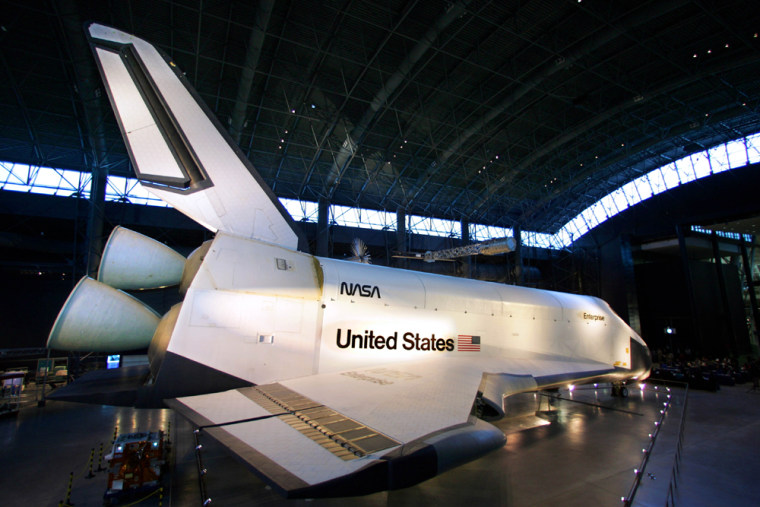The Smithsonian is about to take the wraps off a new hangar where visitors can get close to a space shuttle.
Come Nov. 1, visitors to the National Air and Space Museum's northern Virginia branch will be able to see the space shuttle Enterprise, the museum's second-largest artifact after the Concorde. Curators added more than 600 other space finds to the new wing, including rockets, satellites and 1960s space capsules used by astronauts.
"I get excited about this because to me it shows that if you really put your mind to something you can accomplish things that seem to be outrageous." Paul E. Ceruzzi, space history curator, said at a media preview of the hangar Wednesday.
Since opening in December, the Steven F. Udvar-Hazy Center -- some 25 miles west of Washington, D.C. -- has attracted 1.6 million visitors. The exhibits include the Enola Gay, which dropped the atomic bomb on Hiroshima. But they couldn't walk through the 53,000 square foot hangar because workers were scrubbing the grimy shuttle that had been in storage for nearly two decades.
"If you leave something in your garage for 17 years, it's not going to look that great when you go and pick it up, so it took a lot of cleaning, a lot of elbow grease," said Gen. John R. Dailey, museum director.
The Enterprise flew five missions but never into space. It was used to test ideas and designs during the development of NASA's shuttle program.
"This is the closest you can ever get to a real space shuttle, and you can see it from every angle," said Valerie Neal, space shuttle curator, standing next to the 112 foot long spacecraft.
But visitors cannot go inside the shuttle, which NASA stripped clean. The space agency also borrowed the front wing panels and the hardware that holds them for its investigation into the disintegration of space shuttle Columbia on Feb. 1, 2003 that killed the seven astronauts.
Workers moved about 50 space artifacts already on display into the new wing, and unpacked hundreds of others that had been sitting in storage for decades.
Among the other items displayed is Gemini VII, where in 1965, astronauts Frank Borman and James Lovell spent 14 days in space. Lovell later commanded Apollo 13, and was portrayed by Tom Hanks in the 1995 movie "Apollo 13," about the near-fatal mission to the moon. There are also lunar overshoes worn by astronaut Alan Shepard, the first American to journey into space.
The Smithsonian is trying to raise $83 million to build a restoration hangar, archives and storage facilities.
